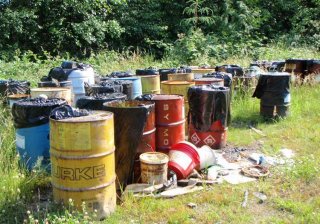Radioactively Contaminated Sites
- The EPA’s Superfund program is the federal government program that identifies and cleans up the most contaminated sites in the nation.
- Some Superfund sites are radioactively contaminated.
If radioactive materials are manufactured, used, stored, or disposed of improperly, it’s possible for them to contaminate buildings and the environment. Sites contaminated with radioactive material require cleanup. Every site cleanup is different. The actions needed for cleanup depend on a number of factors including the radioactive elements involved, the amount of the material, and the potential for human exposure.
About Radioactively Contaminated Sites
Every site contaminated by radioactive material is different. Contaminated sites can be abandoned or still operational. They can be as small as a corner of a laboratory or as big as an abandoned nuclear weapons plant from the Cold War era. Depending on the type of facility and the type of radiation released, contamination could be found in air, soil, liquids, or on equipment. Once discovered, contaminated sites must be closely monitored to protect people from exposure to radiation. Monitoring and cleanup may be completed by the owner of the facility or the federal government if the site has been abandoned or is no longer operating.
Radioactively contaminated sites are cleaned up under a variety of government programs. The EPA's Superfund program identifies, ranks, and cleans up the most hazardous sites in the United States. An example of a radioactively contaminated Superfund site is the Safety Light Corporation in Pennsylvania, which used radioactive materials, including radium and tritium, in manufacturing commercial products. However, not all Superfund sites are contaminated with radioactive material.

When working to clean up radiological contamination at Superfund sites, workers communicate with the people living around the site to educate these people about why it is important to take precautions around the site and the hazards associated with the site. The community may even be involved in planning the cleanup. When the cleanup plan is complete, the EPA reviews the plan to make sure it protects both people and the environment. The EPA works with law enforcement to make sure that those responsible for the contamination at a site, if they can be identified, are held accountable and pay for site cleanup.
What You Can Do
- Be informed. Learn about local cleanup activities in your community. Knowing where radioactively contaminated sites are located helps you avoid them, reducing your risk of exposure to radiation. You can find out if there are Superfund sites in your community by checking the EPA’s Superfund site map.
- Respect safety zones. Often safety zones are set up around contaminated sites. These zones keep people away from hazardous materials. Only trained professionals who understand the hazard and appropriate safety procedures should be inside the safety zones.

